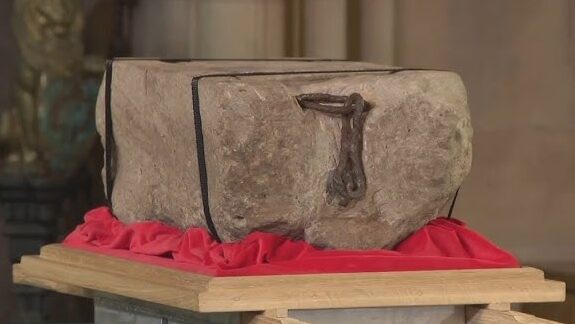
In a remarkable breakthrough, a researcher has successfully traced the missing fragments of the infamous Stone of Scone, also known as the Stone of Destiny. These pieces, long considered lost, reveal a hidden history tied to the stone’s ancient Scottish coronation traditions and its tumultuous journey through English custody. This discovery not only restores the relic’s physical integrity but also challenges longstanding narratives about its authenticity and symbolic power.
Historical Origins of the Stone of Scone
The Stone of Scone, also known as the Stone of Destiny, has a legendary role in Scottish history. It was used in the coronations of Scottish kings at Scone Abbey since at least the 9th century. Early accounts suggest its biblical or Irish provenance, with traditions linking it to the biblical Jacob’s pillow. The stone’s journey took a dramatic turn in 1296 when Edward I relocated it to Westminster Abbey as a spoil of war, marking the start of its English chapter.
The 1950 Theft and Fragmentation
On Christmas Eve 1950, the stone was stolen from Westminster Abbey in a daring raid by Scottish nationalists. During the transport, the stone was broken into pieces. The nationalists’ demands for Scottish independence were loud and clear, and the stone was eventually recovered in April 1951 at Arbroath Abbey. However, several fragments were unaccounted for at the time. Despite immediate repairs by stonemasons, the artifact was left in a compromised state after its return to Westminster.
The Researcher’s Investigative Approach
The lead researcher embarked on a meticulous journey to find the missing pieces. This involved diving into 1950s police records and conducting interviews with descendants of the original thieves. Modern forensic techniques, such as material analysis, were used to authenticate potential fragments held in private collections. The researcher also collaborated with institutions like Historic Environment Scotland to cross-reference historical photos and eyewitness testimonies from the recovery.
Tracking Down the Lost Fragments
One specific fragment was discovered preserved by a family member of a 1950 thief. It was verified through matching geological composition. A second piece was located in an English museum’s uncurated storage, overlooked since the 1950s. The final fragment was identified in a Scottish collector’s estate, confirmed via inscriptions matching the original stone’s markings.
Revelations from the Hidden History
The fragments reveal evidence of earlier medieval repairs, suggesting the stone’s composition includes non-original materials from as early as the 12th century. This has implications for the stone’s authenticity, sparking debates over whether it truly originated in Scotland or was a symbolic substitute. Newly uncovered letters from 1951 show British authorities’ decision to conceal the full extent of the damage to avoid political fallout.
Restoration and Future Significance
Conservation efforts are ongoing at Edinburgh Castle, where the reassembled stone now resides following its 1996 repatriation. The story of the fragments bolsters calls for full Scottish sovereignty over national artifacts. Despite ongoing authenticity questions, experts note the stone’s enduring role in modern coronations, such as its use in Charles III’s 2023 ceremony.
The discovery of these missing fragments not only restores the Stone of Scone’s physical integrity but also unveils a hidden history that challenges longstanding narratives about its authenticity and symbolic power. This breakthrough serves as a testament to the enduring significance of the Stone of Destiny in Scottish history and its continued relevance in modern times.
More from MorningOverview